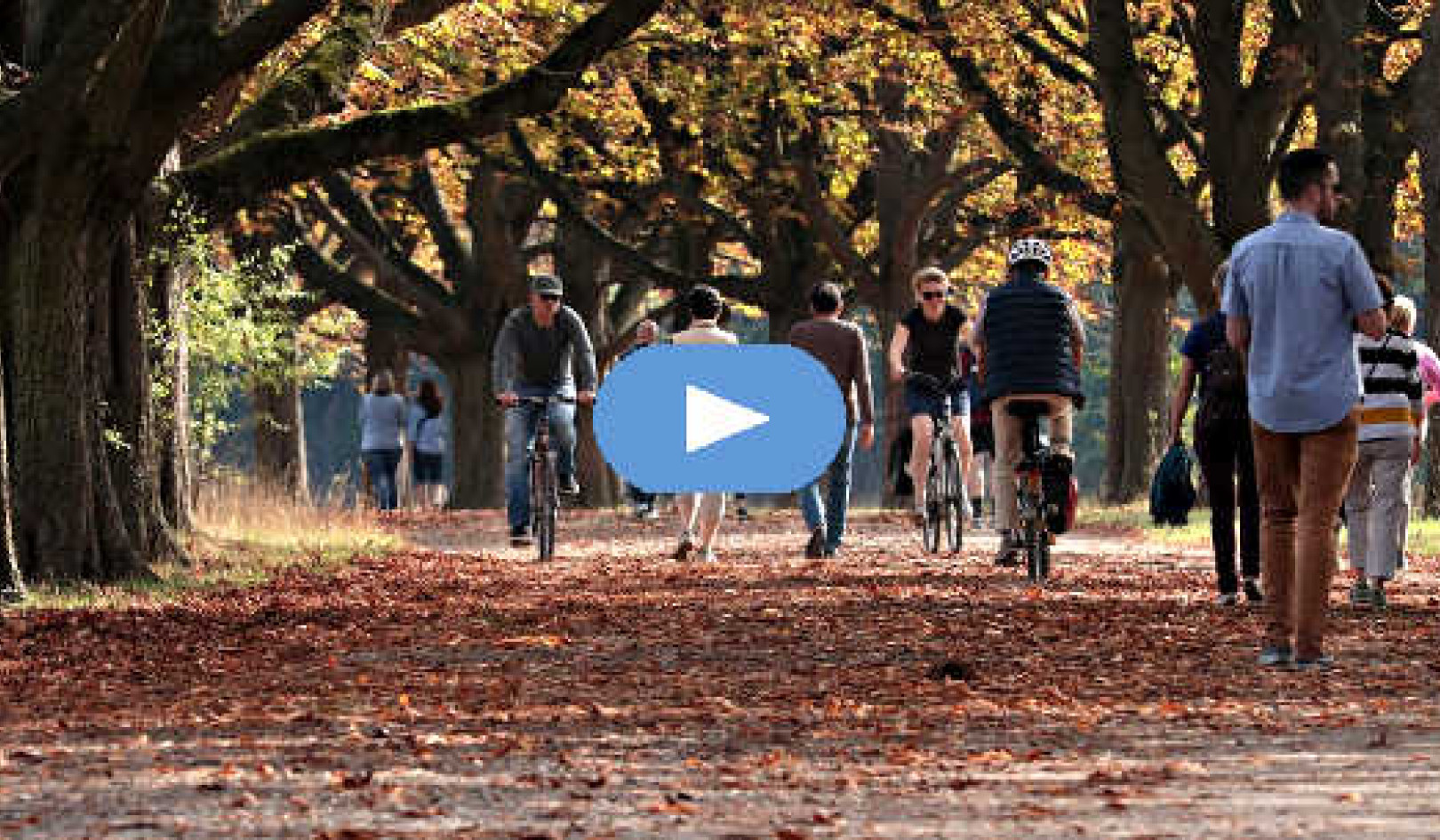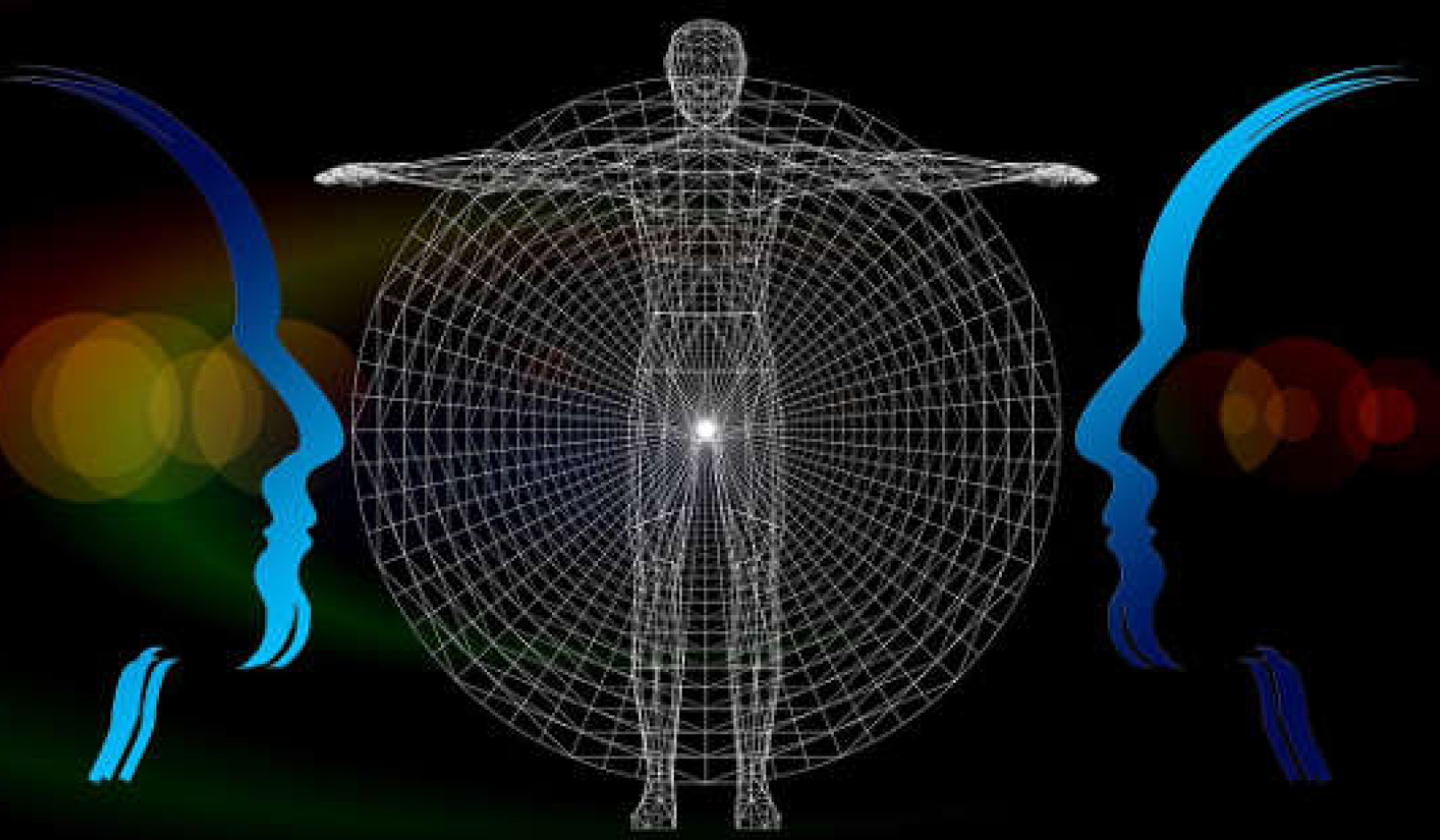
It’s important to get regular practice. Mitchell Joyce/Flickr, CC BY-NC
Remember then: there is only one time that is important – Now! It is the most important time because it is the only time when we have any power.
This quote by Leo Tolstoy in What Men Live By and Other Tales is valuable wisdom and a fitting prompt for us to take this moment to intentionally direct our attention to what is actually happening now.
You might begin to notice the variety of sights and sounds in your environment. Within your space you can then become aware of your body, its posture and all of its sensations such as those coming from skin, muscles, organs and so on.
Take this moment to tune into your breath, noticing the natural process of breathing in and out. Notice the sensations and movements associated with breathing – in your lungs, chest and abdomen, for example.
Keep breathing naturally as you now observe your current feelings or the quality of your emotions. You can also take notice of your thoughts, accepting them as they are, rather than dismissing or altering them.
Right now you have an opportunity to just be. Pause and grant yourself a short break. Gently close your eyes, if appropriate, and for a few quiet minutes be still.
Follow the above suggestions to openly explore your body, breath, feelings and thoughts at this moment. Begin now and then read on when you are done.
Well done! You have just completed a short mindfulness exercise. For those who declined the invitation, there is still time to go back and have that experience.
What Is Mindfulness?
Mindfulness is commonly defined as paying purposeful attention to one’s moment-to-moment experience in a non-judgemental and accepting way.
Mindfulness can be considered to be a natural capacity of the human mind. But because we typically shape our mind to wander and be distracted, mindfulness must be cultivated by regularly engaging in techniques that explicitly promote paying attention to the moment.
Increasing mindfulness has a number of benefits including improved psychological well-being and reduced symptoms of anxiety and depression.
 Mindfulness techniques can be applied to day-to-day routines. Basilievich/Flickr, CC BYAccordingly, there has recently been a dramatic uptake of mindfulness training by individuals seeking to improve their health and well-being or to improve their performance in education, sport or corporate settings.
Mindfulness techniques can be applied to day-to-day routines. Basilievich/Flickr, CC BYAccordingly, there has recently been a dramatic uptake of mindfulness training by individuals seeking to improve their health and well-being or to improve their performance in education, sport or corporate settings.
But as promising as the benefits of mindfulness seem to be, the research evidence supporting its efficacy is not conclusive. We don’t yet understand how exactly it works.
One line of thought is based on the capacity of the practices to change the brain in ways that lead to increased attention and cognitive abilities. These changes arise because the techniques of mindfulness emphasise the use of regions of the brain responsible for attentiveness, discernment and behaviour control.
By strengthening these faculties, the brain is better able to regulate emotions and stress. It also becomes better at higher-order processes like divergent thinking, which is an element of creativity.
Researchers are exploring other potential benefits. This year, for example, my colleagues and I published research on the quality of life and emotional well-being benefits of mindfulness development for stroke survivors.
One common debilitating consequence of stroke and other neurological conditions, such as multiple sclerosis, is fatigue. My research review provides preliminary evidence that mindfulness-based interventions may reduce the symptoms of fatigue in those living neurological conditions.
Other researchers are investigating the benefits of mindfulness interventions for chronic fatigue syndrome, cancer-related fatigue and management of chronic pain.
More broadly, research is exploring how mindfulness can support lifestyle changes as part of treatment of medical conditions such as diabetes, high blood pressure and heart disease.
Getting Started
Although mindfulness is considered to be relatively safe, before starting out, those with an existing physical or mental health condition should first talk to a health professional. Mindfulness practices should not replace or delay conventional health care.
A variety of techniques can be used to cultivate mindfulness. Some involve purposeful movements such as yoga asanas or tai chi, while others are meditation-based.
No conclusive evidence indicates that one technique is superior to another. The technique must emphasise mindfulness development at a level appropriate to one’s experience and preference. Beyond that, participation and outcomes are determined by intention, motivation, expectations and attitudes.
It is common for people to learn a mindfulness technique by completing a mindfulness course. They then integrate the technique into their daily routine. Regularity of practice is important, even if it is for just a few minutes each day.
As with any skill, learning mindfulness can be quite frustrating. For many, this is the significant barrier to their practice. Working with frustration, or boredom, often provides the initial important lessons of mindfulness.
A well-trained and experienced instructor will ensure the novice is well supported and receives adequate feedback on their progress. And the rapport between instructor and trainee is increasingly being recognised as another important factor developing mindfulness.
In summary, the best way to learn about mindfulness is to practise it. As Albert Einstein said: Learning is experience. Everything else is just information.
This article was originally published on The Conversation
Read the original article.
About the Author
 Maarten Immink is Senior Lecturer, Human Movement at the University of South Australia. His research investigates cognitive and affective factors that influence human performance. He teaches in the areas of motor learning and control within the human movement and clinical exercise physiology undergraduate degree programs. He is also an accredited yoga and meditation teacher.
Maarten Immink is Senior Lecturer, Human Movement at the University of South Australia. His research investigates cognitive and affective factors that influence human performance. He teaches in the areas of motor learning and control within the human movement and clinical exercise physiology undergraduate degree programs. He is also an accredited yoga and meditation teacher.
Disclosure Statement: Maarten A. Immink has received research funding from the National Stroke Foundation and the Medical Advances Without Animals Trust.
Recommended book:
The Harvard Medical School Guide to Tai Chi: 12 Weeks to a Healthy Body, Strong Heart, and Sharp Mind
by Peter Wayne.
 Cutting-edge research from Harvard Medical School supports the long-standing claims that Tai Chi has a beneficial impact on the health of the heart, bones, nerves and muscles, immune system, and the mind. Dr. Peter M. Wayne, a longtime Tai Chi teacher and a researcher at Harvard Medical School, developed and tested protocols similar to the simplified program he includes in this book, which is suited to people of all ages, and can be done in just a few minutes a day.
Cutting-edge research from Harvard Medical School supports the long-standing claims that Tai Chi has a beneficial impact on the health of the heart, bones, nerves and muscles, immune system, and the mind. Dr. Peter M. Wayne, a longtime Tai Chi teacher and a researcher at Harvard Medical School, developed and tested protocols similar to the simplified program he includes in this book, which is suited to people of all ages, and can be done in just a few minutes a day.
Click here for more info and/or to order this book on Amazon.


























